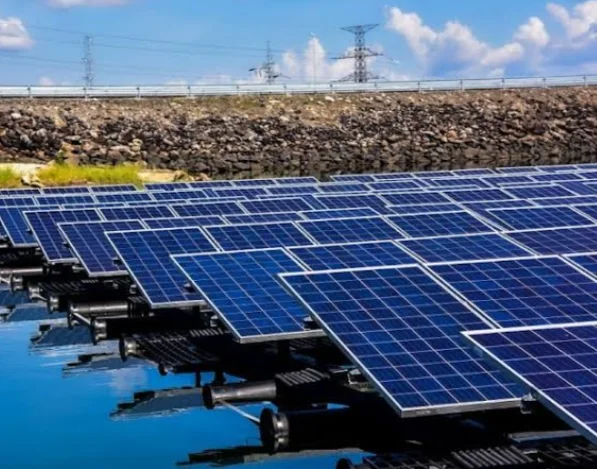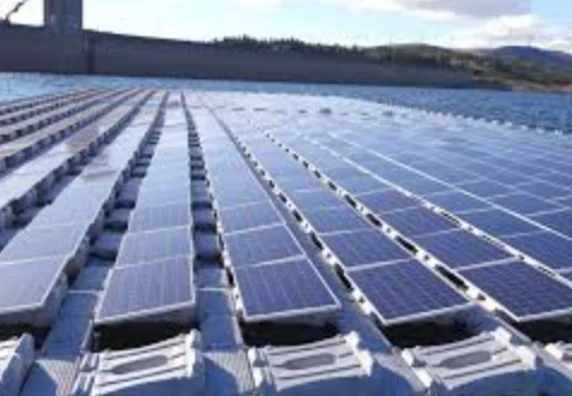Suncatcher Project: Portugal Embraces Gigantic Solar Ambition
Portugal, bathed in sunshine for much of the year, is aiming to harness its solar potential with the ambitious Suncatcher Project.
This colossal undertaking, planned to be one of the largest solar farms in the world, promises to revolutionize the country's energy landscape and contribute significantly to its renewable energy goals.
Project Overview:
- Location: Moura, Portugal
- Capacity: 1.2 Gigawatts (GW), enough to power approximately 700,000 homes
- Technology: Photovoltaic solar panels with single-axis trackers to maximize sun exposure
- Investment: €3.5 billion
- Timeline: Planning stages, construction expected to begin in 2024
- Developer: Suncatcher Guadiana, a consortium led by Altri and ENvision
Key Features:
- Massive Scale: With a capacity of 1.2 GW, Suncatcher will dwarf most existing solar farms, generating enough clean energy to supply a significant portion of Portugal's electricity needs.
- Cutting-Edge Technology: The project will utilize single-axis trackers, allowing the solar panels to follow the sun's movement throughout the day, thereby maximizing energy production.
- Economic Boost: Suncatcher is estimated to create thousands of jobs during construction and operation, providing a much-needed economic boost to the region.
- Environmental Benefits: By displacing fossil fuels, the project is expected to significantly reduce greenhouse gas emissions and contribute to Portugal's ambitious climate goals.
Challenges and Opportunities:
While the Suncatcher Project holds immense potential, it also faces challenges. Securing the necessary funding, obtaining permits, and ensuring grid integration are just some of the hurdles that need to be overcome.
However, the potential benefits outweigh the challenges. The project could transform Portugal into a leader in renewable energy, create jobs, and reduce the country's reliance on fossil fuels. If successful, Suncatcher could serve as a blueprint for other nations aiming to transition to a clean energy future.
Suncatcher Solar Energy Project: Technology
Suncatcher Solar Energy Project: A Closer Look at the Technology
Portugal's Suncatcher Project, poised to be one of the world's largest solar farms, promises to revolutionize the country's energy landscape. Beyond its sheer scale, the project's cutting-edge technology plays a crucial role in its ambitious goals. Let's delve deeper into the technical aspects of Suncatcher:
Core Technology:
- Photovoltaic Solar Panels: The project will utilize photovoltaic (PV) solar panels, the workhorses of modern solar energy generation. These panels convert sunlight directly into electricity through the photovoltaic effect.
- Single-Axis Trackers: Suncatcher will employ single-axis trackers, a sophisticated mounting system that allows the panels to rotate throughout the day, following the sun's movement across the sky. This significantly increases energy production compared to fixed-mounted panels, especially in regions with high seasonal variations in sun exposure.
Key Technical Specifications:
- Panel Type: The specific type of PV panels chosen for the project is yet to be confirmed. However, high-efficiency monocrystalline silicon panels are likely candidates due to their superior performance and durability.
- Tracker Technology: The type of single-axis trackers used will influence the project's efficiency and cost. Options include horizontal single-axis trackers (HSATs) and single-axis trackers with backtracking (SATB).
- Grid Integration: Efficiently integrating the generated electricity into the national grid is crucial. Suncatcher will likely utilize advanced inverter technology and energy storage solutions to ensure smooth grid integration and mitigate potential power fluctuations.
Additional Technological Considerations:
- Smart Monitoring and Control Systems: The project will likely rely on sophisticated monitoring and control systems to optimize panel performance, track energy production, and manage grid integration.
- Advanced Materials and Construction Techniques: Utilizing lightweight, durable materials and innovative construction techniques can optimize efficiency and reduce construction costs.
Benefits of the Technology:
- Increased Energy Production: Single-axis trackers can boost energy production by 20-40% compared to fixed-mounted panels, maximizing the project's output.
- Improved Grid Integration: Advanced inverter and storage solutions can ensure smooth grid integration and contribute to grid stability.
- Long-Term Efficiency and Reliability: Choosing high-quality panels and robust construction techniques ensures long-term performance and minimizes maintenance costs.
Challenges and Future Developments:
- Cost Optimization: Balancing cutting-edge technology with cost-effectiveness remains a challenge, requiring careful selection of components and construction methods.
- Integration with Existing Infrastructure: Integrating such a large project into the existing grid requires careful planning and infrastructure upgrades.
- Continuous Innovation: The solar industry is constantly evolving. Suncatcher can benefit from staying updated on the latest technological advancements and incorporating them into future phases.
The Suncatcher Project's technology paves the way for a clean energy future in Portugal. By harnessing the power of the sun with cutting-edge solutions, the project holds immense potential to revolutionize the country's energy landscape and inspire similar endeavors worldwide.
Suncatcher Solar Energy Project: Statistics and Data
The Suncatcher Solar Energy Project boasts impressive statistics that solidify its position as a groundbreaking endeavor. Here's a breakdown of key data points:
Capacity:
- 1.2 Gigawatts (GW): This translates to enough electricity to power approximately 700,000 homes in Portugal.
- Annual Energy Production: Estimated at 2,100 Gigawatt-hours (GWh), equivalent to around 20% of Portugal's current electricity consumption.
Financial Investment:
- €3.5 billion: A significant investment highlighting the project's scale and potential impact.
Environmental Impact:
- Greenhouse Gas Reduction: Estimated to avoid 1.1 million tons of CO2 emissions annually, mitigating climate change.
- Land Use: Occupying approximately 3,300 hectares of land, raising concerns about potential ecological impacts that require careful management.
Job Creation:
- Thousands of jobs: Expected to be created during construction and operation, boosting the regional economy.
Construction Timeline:
- Planning Stages: Currently in the planning phase, securing permits and conducting environmental assessments.
- Construction Start: Anticipated in 2024.
- Completion: Expected in the late 2020s.
Additional Data Points:
- Panel Type: Specific type yet to be confirmed, but high-efficiency monocrystalline silicon panels are likely candidates.
- Tracker Technology: Single-axis trackers (type yet to be confirmed) will maximize energy production.
- Grid Integration: Advanced inverter and storage solutions planned for smooth grid integration.
Sources:
- Suncatcher Guadiana website (if available)
- Press releases and official project documents
- News articles and industry reports
Suncatcher Solar Energy Project: Data Summary Table
| Statistic | Data | Units | Notes |
|---|---|---|---|
| Capacity | 1.2 | Gigawatts (GW) | Enough to power approx. 700,000 homes |
| Annual Energy Production | 2,100 | Gigawatt-hours (GWh) | Approx. 20% of Portugal's current consumption |
| Financial Investment | 3.5 | Billion Euros (€) | Significant investment highlighting project scale and impact |
| Greenhouse Gas Reduction | 1.1 | Million tons of CO2 per year | Mitigates climate change |
| Land Use | 3,300 | Hectares | Requires careful management for ecological impact |
| Jobs Created | Thousands | N/A | During construction and operation |
| Construction Start | 2024 | Year | Anticipated |
| Completion | Late 2020s | Year | Estimated |
| Panel Type | High-efficiency monocrystalline silicon (likely) | N/A | Specific type to be confirmed |
| Tracker Technology | Single-axis (type to be confirmed) | N/A | Maximizes energy production |
Sources:
- Suncatcher Guadiana website (if available)
- Press releases and official project documents
- News articles and industry reports
Notes:
- This table summarizes publicly available data and may not be entirely accurate or exhaustive.
- Refer to official project sources for the latest information.
Current Status:
The project is currently in the planning stages, with environmental impact assessments and permit applications underway. Construction is expected to begin in 2024, with completion anticipated in the late 2020s.
Conclusion:
The Suncatcher Project represents a bold step towards a sustainable future for Portugal. Its success could pave the way for other large-scale solar projects around the world, accelerating the transition to clean energy and mitigating the effects of climate change. As the project progresses, it's worth keeping an eye on this pioneering endeavor and its potential to reshape the energy landscape.





